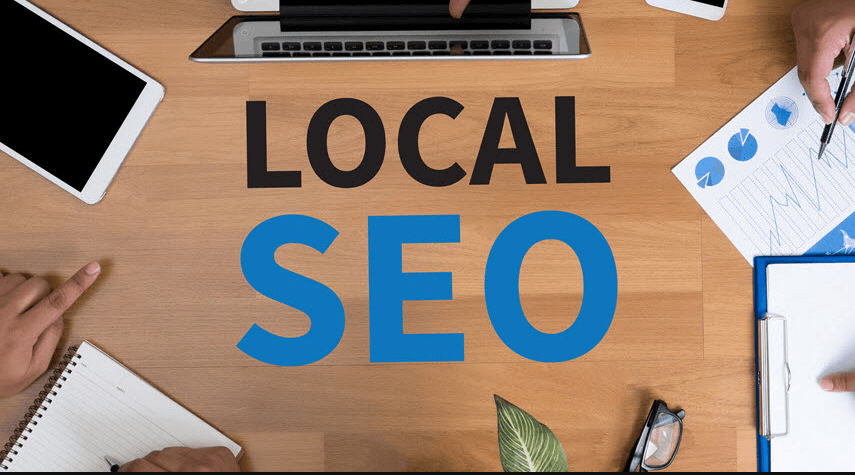With an office move scheduled, now is the time for a local SEO audit. I want to take an inventory of local landing pages on the website and compare them to best practices, validate all the office addresses, optimize my Google map listings, and assess local citations.
But algorithms and best practices change, so I went looking for a local SEO checklist for 2020. I found several articles, some new features in Google My Business, and an appreciation of how ranking factors of local SEO work together for better visibility.
Click to Read Sections:
Search results for “Local SEO Checklist 2020”
- How to do SEO for your local business: The Local SEO Checklist
- A Complete Local SEO Checklist
- 50+ Point Local SEO Checklist to Supercharge Your Local Marketing
- A Simple Local SEO Checklist to Improve Your Rankings Fast in 2020
- A Complete Local SEO checklist for 2020 — Increase Online Sales
How to rank in Google local search results?
After some reading, I simplified my approach to a 3-step plan.
- Start with the Google My Business listing
- Apply best practices to local landing pages
- Spread the address with consistent citations
These three areas are related and work together to make your Google business listing appear in map results and your local landing page rank organically. The more address citations and backlinks the higher the local page will rank organically, which is also highly correlated with appearing in Google map results.
Step 1 – Optimize Google My Business
I have access to all my locations, but if not I’d need to claim and then verify ownership.
Even an unclaimed listing can appear in local map results, but with optimization the business can appear for more and better targeted local searches. For example, the difference between appearing in map results for a “something” versus “something open now” could be as easy as updating business hours in Google My Business.
Showing up in Google local map results depends on three big things: relevance, proximity, and prominence. While opening a new location may be the only legitimate way to influence proximity to the searcher, optimizing the Google My Business listing with categories, products and services helps with relevance, while reviews and even organic rankings of local pages help improve prominence.
Google My Business is also how to respond to customer reviews, and reviews are definitely a ranking factor.
In short, just optimize everything – from categories and service area to hours, products and services, a good description, and plenty of pics and videos for eye appeal.
Is there anything new in Google My Business?
A Search Engine Land article listed changes and updates that happened every single month in 2019, so it’s best to take a fresh look if you haven’t logged in lately. For example, in January Google emphasized messaging between searcher and business, in August Google introduced bulk review management features within My Business, and in November there was a local algorithm update.
Step 2 – Local Landing Page SEO Best Practices
Below the ads atop Google search results, and below the local business results are organic search results. This is where an office location page should appear. If somebody clicks a location page, it means they’re probably nearby, and are looking for more information before taking the next step.
An article on Brandify listed six ways to optimize your location pages, and five of them apply to any web page:
- Incorporate keywords into the title tag of the page
- Check image alt text and titles
- Ensure all URLs are clean
- Standardize your name, address, and phone number (NAP)
- Optimize for mobile
- Fast page load time
What’s the perfect local landing page look like? Here’s a list of the common features:
- Location hours, including special hours for holidays or hours that may differ for specific departments
- A map with business location
- A “get directions” button
- Information about this location including name, address, and phone number tagged properly with Schema markup
- Photo content can be used showcase the store itself as well as the most popular products or services
Step 3 – Build Citations AKA Address Backlinks to Help Local SEO
What is a local SEO citation?
Citations are like backlinks for your address, meaning others share your address on their site or in their directory, which tells Google your business must be popular. According to MOZ:
“A local citation is any online mention of the name, address, and phone number for a local business. Citations can occur on local business directories, on websites and apps, and on social platforms. Citations help Internet users to discover local businesses and can also impact local search engine rankings. Local businesses can actively manage many citations to ensure data accuracy.”
Moz
Consistent use of your business name, address and phone number (NAP) across the web builds local citations that help you rank in local results. How important is using your address consistently? When talking about the importance of consistenty using the same name, address and phone (NAP) info, Jeff Bullas said this:
“One of the factors that determine whether you are an established business within the searcher’s locality is that your name, address, and phone number are mentioned in various places throughout the web. You want to make it as easy as possible for Google to understand that the business that is being mentioned on another website is in fact yours. To do this, you need to make sure that your name, address, and phone number is uniform across all mentions of your business across the web. So make sure you set this up correctly from the very beginning when you input this data into your GMB.”
Jeff Bullas
Focus on quality; not quantity of address citations
Relevancy is important to Google, so build citations on sites and directories in the same or a related business category for best results. As Search Engine Journal said in it’s guide to citations and local SEO:
“While some citations have a higher domain authority than other, the category relevancy is more important than the domain authority. That’s why getting listed in these industry categories is critical.”
Search Engine Journal
And finally, SEJ also lists resources for business directories by category to find relevant citation sites:

